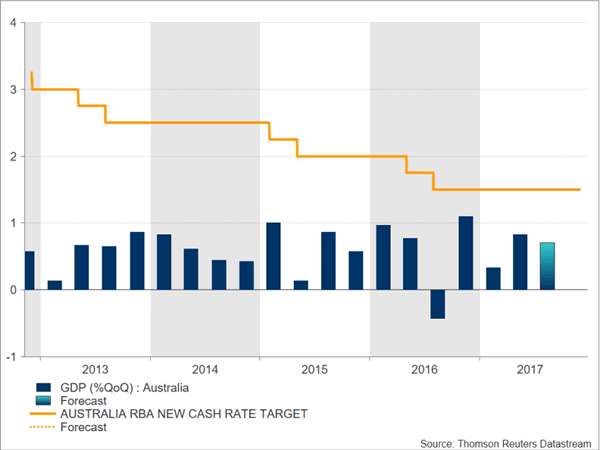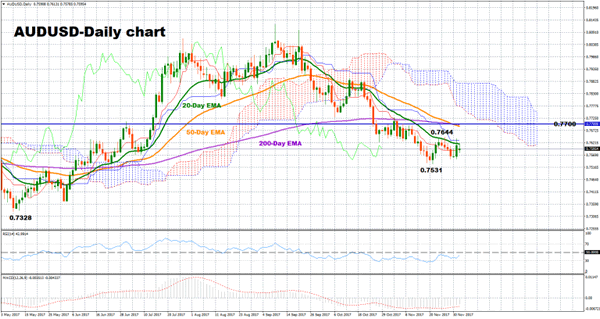"If the economy continues to improve as expected, it is more likely that the next move in interest rates will be up, rather than down," said the RBA Governor, Philip Lowe in his speech at the Australian Business Economists’ annual dinner two weeks ago. But then he immediately highlighted that in the near term, an adjustment in monetary policy is not strongly considered as inflation remains subdued while the economy has still room for growth. Given this statement, RBA policymakers are less likely to raise interest rates in their policy meeting on Tuesday. However, GDP growth readings out of Australia on Wednesday and particularly the consumption component of the measure are expected to draw more attention and therefore generate greater volatility to the Australian dollar.
On Tuesday, the RBA is anticipated to hold interest rates unchanged at a record low of 1.5% for the sixteenth consecutive meeting. Even though inflation is not far away from the central bank’s target of 2.0% (1.8% y/y in Q3 2017), as is the case in other economies, including the US, Japan and the EU, policymakers are said to avoid exiting monetary stimulus for the moment as Australian household debt-to-GDP is still among the highest in the world (122% as of March 2017). Besides that, the wage growth has so far shown a slow reaction to the RBA’s easy monetary policy, continuing to trend at record low levels since stimulus implementation despite the unemployment rate hitting a four-year low of 5.4% in October. Regarding that, rate setters believe that companies refuse to increase wages as they also face strong competition by new entrants. Higher interest rates are thus not expected to boost consumers’ purchasing power but instead squeeze disposable income (due to high debt levels that need to be serviced) and consequently harm consumption which accounts for half of Australia’s economic growth.
A day after the RBA’s rate decision, the Australian Bureau of Statistics will publish figures on GDP growth, with analysts predicting an expansion of 3.0% y/y in the third quarter compared to 1.8% seen previously. However, on a quarterly basis, forecasts see the growth rate slowing down by 0.1 percentage points to 0.7%. Household final consumption expenditure will be also in main focus on Wednesday as any decreases in household spending would indicate that economic growth will likely suffer in the upcoming quarters. First evidence on consumption could be given by retail sales figures due on Tuesday as well. According to forecasts, retail sales might post positive growth in October for the first time in three months, rising by 0.3% m/m.

Even if the RBA decides to leave rates unchanged tomorrow, an increasing gap between the Australian and the US interest rates would force the central bank to reduce stimulus in the subsequent periods given that the Fed is considering to keep raising rates in the coming years. With the US banks offering attractive deposit rates, the Australian banks will be forced to raise mortgage rates to some extent to attract deposits, hurting the already indebted consumers even more.
Turning to forex markets, the aussie is currently consolidating near six-month low levels, maintaining a bearish bias below the Ichimoku cloud and the exponential moving average lines. The RSI is below 50, suggesting that negative movements are more likely to occur in the near term. However, the oscillator is pointing to the upside, hinting that the pair might move upwards for a while before it resumes its downtrend (The RSI is marginally above 50 in the 4-hour and the 1-hour chart). Should Australian data disappoint, the pair might find immediate support at the previous low of 0.7531. Steeper decreases could also approach the one-year low of 0.7328. Alternatively, encouraging economic releases would shift focus to the previous high of 0.7644, while the 0.7700 key level could be a strong resistance as the 50-day and the 200-day EMA are also laying in that area. A close above the EMA lines could turn the bias from bearish to bullish.















